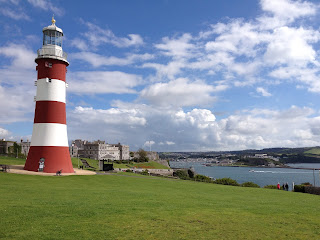I am having real trouble dealing with recommended reading in the Context of Practice course I'm doing.
I've ended up buying 5 books and all of them are written in a "scholarly" style that really gets on my goat.
By "scholarly" I mean that the books are packed with references to other studies so I come away with the impression that I'm dipping into ivory tower stuff - a bunch of academics more interested in each other's work rather than helping an outsider like me understand what they're going on about.
In fact, I get the impression that these folk deliberately set out to make their musings hard to understand by the likes of me by using:
By "scholarly" I mean that the books are packed with references to other studies so I come away with the impression that I'm dipping into ivory tower stuff - a bunch of academics more interested in each other's work rather than helping an outsider like me understand what they're going on about.
In fact, I get the impression that these folk deliberately set out to make their musings hard to understand by the likes of me by using:
- Long-winded ways of explaining things
- Very long sentences
- Words that I have to look up in a dictionary (if I can be bothered)
I find it very difficult to maintain my concentration. I drift off and eventually realise that I've "read" several pages without taking in any of it.
It's not as though I struggle with reading and writing. I was a journalist and editor for 30-odd years and followed rules like these:
- Get to the point
- Be concise
- Use simple words
- Make it easy to understand
In other words, the exact opposite!
The Books
So here are the 5 books I've been struggling with:
(1) "Designing Things: A Critical Introduction to the Culture of Objects" by Prasad Boradkar.
I got to page 65 and seized up.
(2) "Design Studies: A Reader" by Hazel Clark and David Brody
I started reading the introduction of this one, then leafed through it thinking "mmmmm"
The above were recommended by Sally Hall, our temporary lecturer. She seemed quite down to earth so I was hoping the books would be, too.
The following ones are "suggested reading" in our assignment brief:
(3) "Thinking Through Craft" by Glenn Adamson
I got to page 10 and seized up
(4) "Scale" by Andrew Herod
I asked for this as a Christmas present. The people that gave it to me were impressed - said they couldn't understand it. Maybe I could if I dedicated a lot of time to it but I can't be arsed.
(5) "The Craft Reader" edited by Glenn Adamson
Another Christmas present. It looks a little less intimidating but it's 630 pages long.
The above were recommended by Sally Hall, our temporary lecturer. She seemed quite down to earth so I was hoping the books would be, too.
The following ones are "suggested reading" in our assignment brief:
(3) "Thinking Through Craft" by Glenn Adamson
I got to page 10 and seized up
(4) "Scale" by Andrew Herod
I asked for this as a Christmas present. The people that gave it to me were impressed - said they couldn't understand it. Maybe I could if I dedicated a lot of time to it but I can't be arsed.
(5) "The Craft Reader" edited by Glenn Adamson
Another Christmas present. It looks a little less intimidating but it's 630 pages long.
The Crunch
Here's what bothers me about these books:- I think it's unrealistic to expect contemporary craft students to read and understand these books. They're written by academics for academics - not for people whose focus is on making works of art.
- Reading these books would take a lot of time and effort and what would I gain from it? Maybe I could pass myself off as an intellectual but I'd prefer to spend my time reading books that were more directly relevant to what I'm doing at college. I am reading (and enjoying) a number of books in this category and will write about them in due course.
- Most worrying of all, my current assignment in Contemporary Craft calls for me to research and write an essay of 2,500 to 3,000 words. I don't have a problem with that, but I'm pretty sure that I'll be expected to emulate the "scholarly" style in these books. That will REALLY irk me!
Update 8th January 2015
Our lecturer acknowledged that our recommended books were above our level, more suitable for PhD types and recommended the following as easier reads:
“Stuff” by Daniel Miller (BTW, I’ve read and really enjoyed “Stuff Matters” by Mark Miodownik)
“Beautiful Thing: An Introduction to Design” by Robert Clay
“Hertzian Tales: Electronic Producs, Aesthetic Experience, and Critical Design” by Anthony Dunne (who collaborates with Fiona Raby – see http://www.dunneandraby.co.uk)
“Makers: The New Industrial Revolution” by Chris Anderson
“Emotionally Durable Design: Objects, Experiences and Empathy” by Jonathan Chapman. See also this item from BBC's Today programme:





























